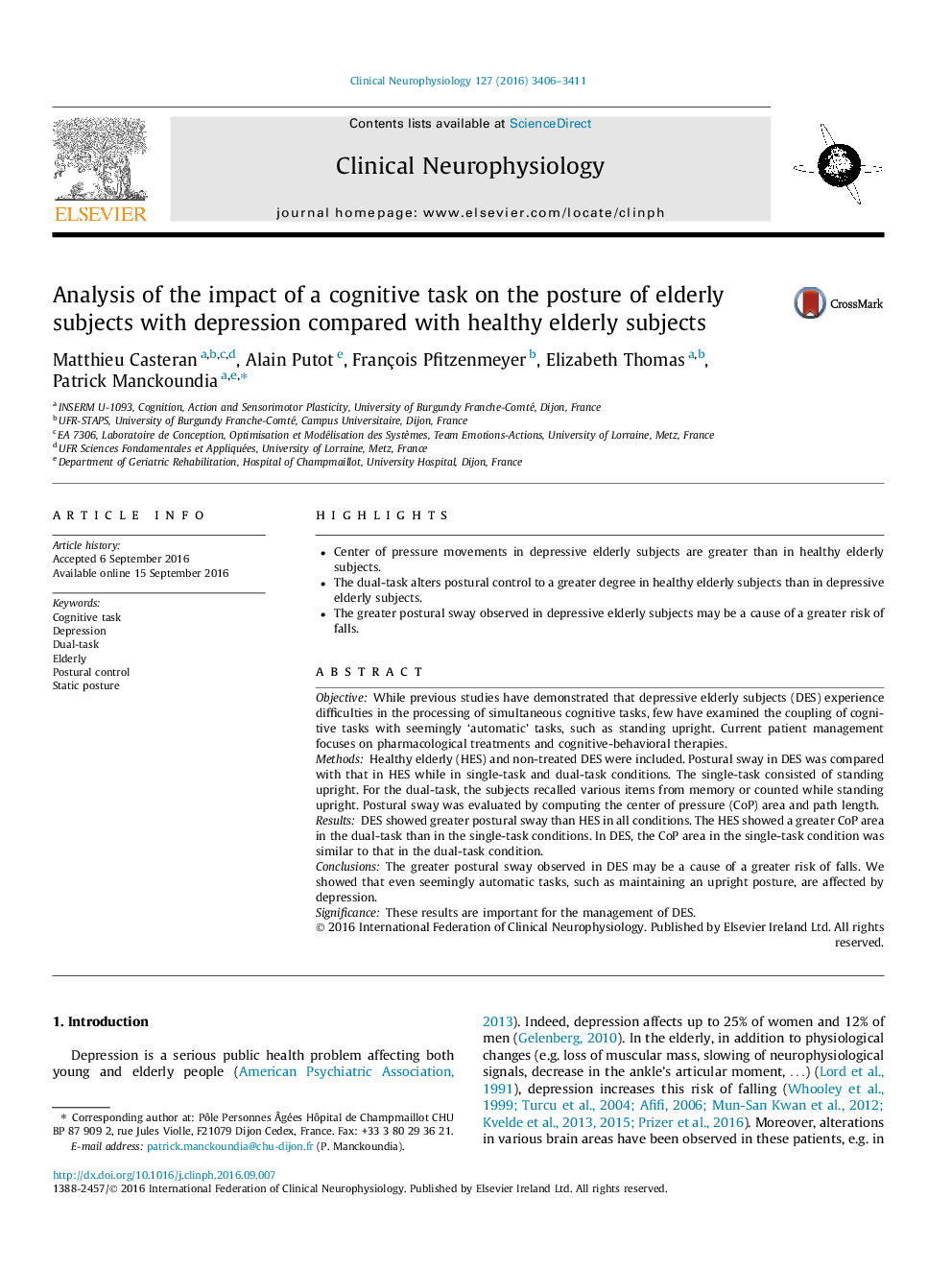| Article ID | Journal | Published Year | Pages | File Type |
|---|---|---|---|---|
| 5627566 | Clinical Neurophysiology | 2016 | 6 Pages |
â¢Center of pressure movements in depressive elderly subjects are greater than in healthy elderly subjects.â¢The dual-task alters postural control to a greater degree in healthy elderly subjects than in depressive elderly subjects.â¢The greater postural sway observed in depressive elderly subjects may be a cause of a greater risk of falls.
ObjectiveWhile previous studies have demonstrated that depressive elderly subjects (DES) experience difficulties in the processing of simultaneous cognitive tasks, few have examined the coupling of cognitive tasks with seemingly 'automatic' tasks, such as standing upright. Current patient management focuses on pharmacological treatments and cognitive-behavioral therapies.MethodsHealthy elderly (HES) and non-treated DES were included. Postural sway in DES was compared with that in HES while in single-task and dual-task conditions. The single-task consisted of standing upright. For the dual-task, the subjects recalled various items from memory or counted while standing upright. Postural sway was evaluated by computing the center of pressure (CoP) area and path length.ResultsDES showed greater postural sway than HES in all conditions. The HES showed a greater CoP area in the dual-task than in the single-task conditions. In DES, the CoP area in the single-task condition was similar to that in the dual-task condition.ConclusionsThe greater postural sway observed in DES may be a cause of a greater risk of falls. We showed that even seemingly automatic tasks, such as maintaining an upright posture, are affected by depression.SignificanceThese results are important for the management of DES.
